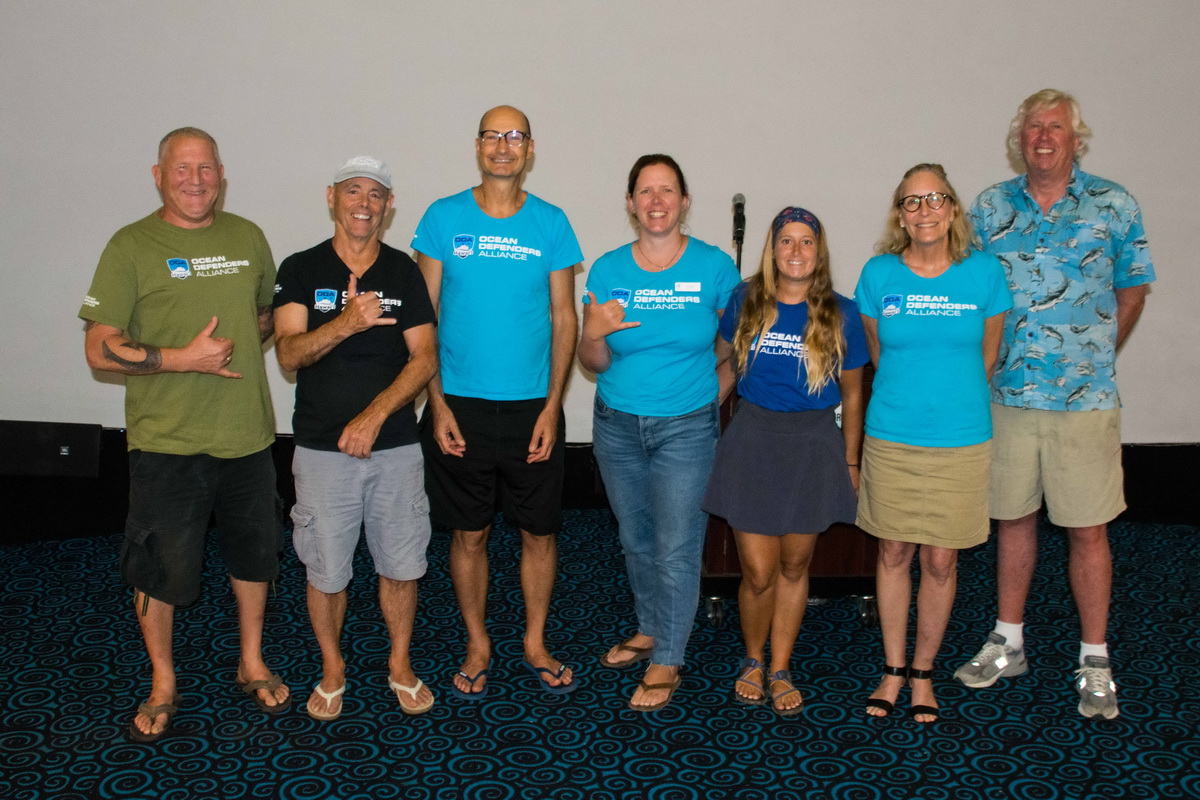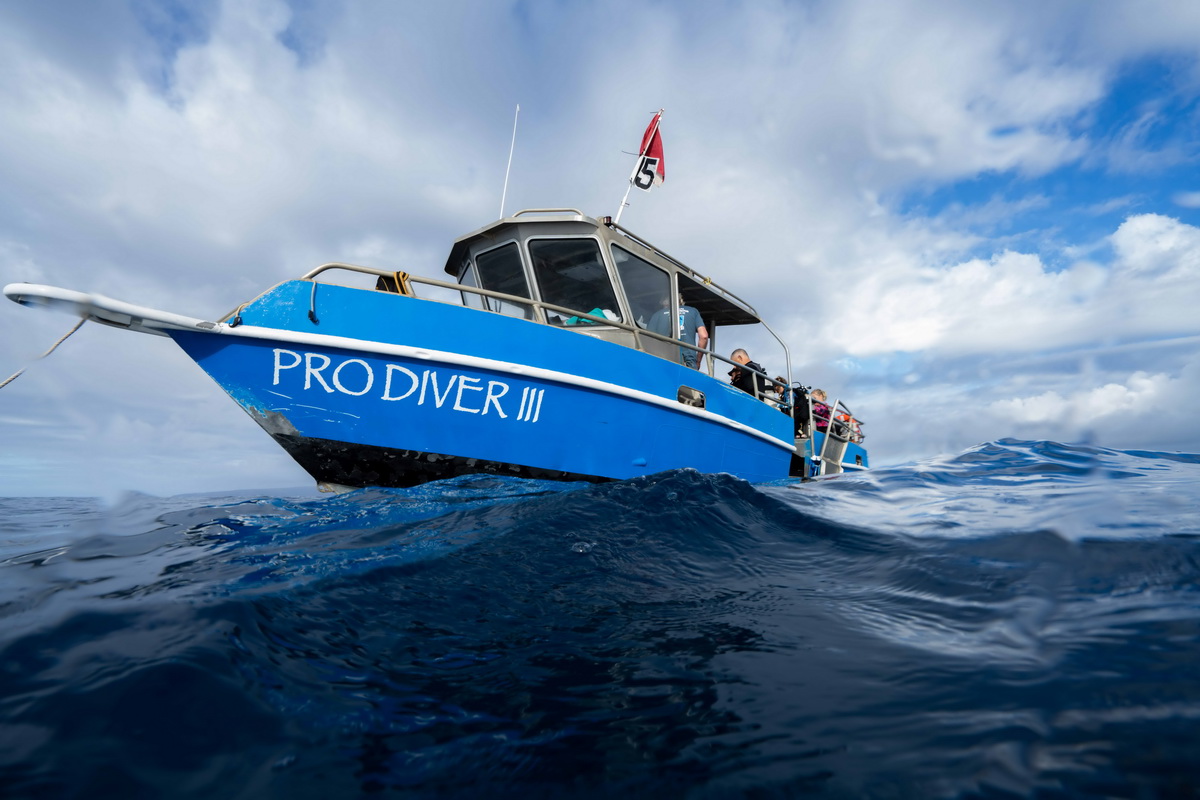By Founder and President Kurt Lieber
You’ve probably heard the term Maui Wowie! Hard for me to not think of that phrase when encapsulating my recent trip here.
On Thursday, March 8th, I gave a presentation to 65 ocean lovers.
I was invited by Susan Frett to inform people about ODA’s history and how the folks on Maui can get involved with helping to restore the damaged reefs around the island. Susan is conservation manager at the Pacific Whale Foundation (PWF), which is a whale research center and is associated with the Maui Aquarium. The event was held in one of their lecture auditoriums inside the Maui Ocean Center.
My talk lasted 40 minutes, and the Q&A afterwards lasted another hour. You talk about an engaged audience! Two people in particular came up to me afterwards and expressed interest in working with us: Renee of Dive Maui and Rachel of Maui Dreams. They both run dive boats and want to partner with us on some underwater cleanups. Their boats operate in different areas of the island, so we will be able to cover more reefs.
The day after my talk, Susan arranged for Bonnie Monteleone (ODA Board of Directors) and I to go out on one of PWF’s whale watch boats. We were treated to some great viewing of the humpback whales that arrive here every winter to give birth to their babies, and to mate. It was a thrill to witness it all firsthand.
Let’s get some lead out!
A few days later, on Sunday March 11th, ODA organized an at-sea cleanup with 14 scuba divers using a boat ODA chartered. The vessel owner is Michael Dougan of Yonegan's Prodiver Maui. This is the fourth time now he’s been kind enough to charter his boat to us so we can remove manmade debris from Maui’s coastal waters.
The 12 crewmembers this day were (not all pictured): James Bouknight, Jake Brandwine, Rae Dee, Michael Dougan, Bill Epplett, Lindsey G., Lloyd Johnson, Lindsey Kaye, Eva Saragosa, Brian Seifert, Erin Strand, and Clare Takamori and me (Kurt Lieber).
We met up on this fine morning in the parking lot of the Kihei Boat Landing early in the morning and after loading all the dive gear, headed south to a spot called La Perouse Bay. Lloyd Johnson has been leading underwater cleanups around Maui for years and started working with ODA about a year ago. Most of those prior cleanups were shore-based because Lloyd didn’t have the funds to pay to charter a dive boat.
Thanks to our donors, we can pay for these charters and get divers out to more remote reefs.
It was a long ride to the site, but the view was fantastic, the seas were slightly choppy, and there was plenty of cloud cover to keep us from suffering the scourge of the intense rays of the equatorial sun. The ride took about an hour.
Once we got to the site it looked really promising; no waves to speak of and no current. The captain dropped anchor about 100 yards from the rocky outcroppings, and the divers swam over as a group and dropped down into 50 feet of water.
The divers immediately started seeing fishing lines and lures all over the place. Several people said they looked like spider webs all over the coral reef. Each diver had a small bag that they would put the debris in, and then when it was full, they swam over to the strategically placed collection buckets that could hold up to 50 pounds. Once those were filled, lift bags were attached, inflated with air, and the buckets were sent to the surface.

Once the bags were up, two snorkelers were there to swim the “loot” over to the crew on the boat. Mind you these bags were holding about 50 pounds of stuff, so, no easy task swimming 200 feet with that load!
The divers spent about an hour on the first dive, and sent up four buckets loaded with lead fishing weights and lots of fishing lines. What seemed odd to me was that a lot of the line was stainless steel; it’s normally made out of plastic. The reason for the metal line is that the targeted fish are heavy.
For perspective, the photo below shows about twenty feet of line over the corals. On this outing, we covered a total area of about 150 feet by 150 feet.

Jake volunteered his underwater (UW) photography skills to collect these excellent images of what it looked like down there. Mahalo, Jake, for enlightening us all!
When all the divers were back on the boat, we had a discussion about what to do for the second dive. Should we move to a different spot? Heck no, was the emphatic response! Someone said that we could spend a week of dives here before it would be finished.
So, we moved the boat a little closer to the rocks and ate some food while waiting for the divers to get their energy back. By 10 o’clock everyone was back in the water and headed down to the exact same location. As you can see from Jake’s photos this could be a healthy coral reef, and our team wanted to do all they could to give it a chance.
Like clockwork, as we reached the one-hour mark, the divers started ascending and we soon had another four buckets full of debris on the boat.
As we pulled up anchor and headed back to the boat harbor, we were told that it was going to be a bumpy and wet ride back as we were headed directly into the direction the wind and waves typically come. When we got about halfway back, I asked when we could expect the soaking, and was told that it looked like we got a reprieve. We motored back with none of that drama and were treated to several whale sightings along the way, and a spectacular view of all that Maui has to offer. Below is a photo of Molokini Crater, an ancient volcano that lies half way between Maui and Molokai.

We could clearly see to the top of Haleakala crater. It was fascinating to see the remnants of the lava flows that came all the way down from that 10,000-foot-high mountain to find its way through the forests before spilling into the ocean.

Once we got back to shore, we weighed each individual bucket of debris, with each one weighing roughly 50 pounds. The final tally was 392 pounds! Wow, that’s a record for Lloyd and his team.
A big mahalo to everyone who took time out of their lives to dedicate at least one day to make the oceans safer for our friends in the seas!



































































